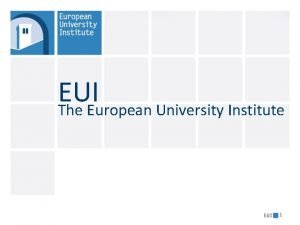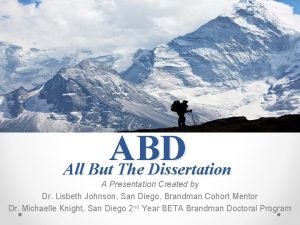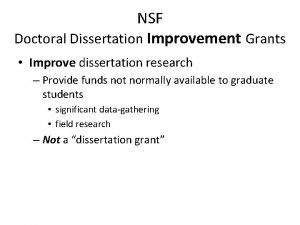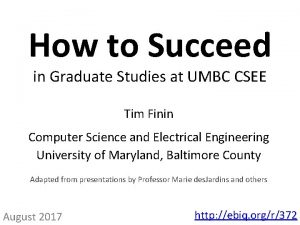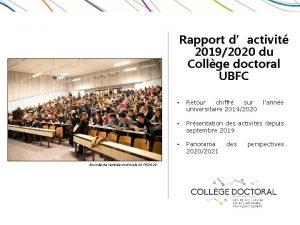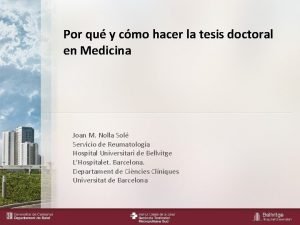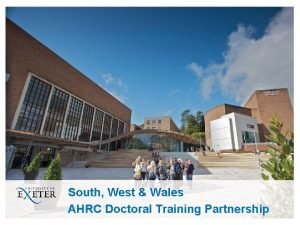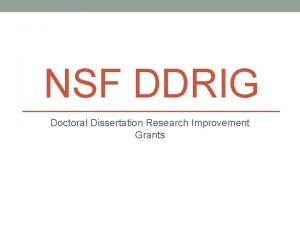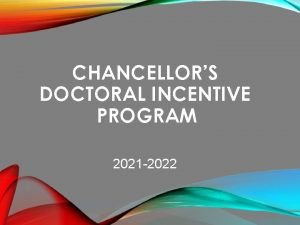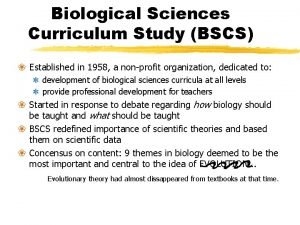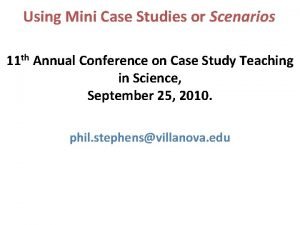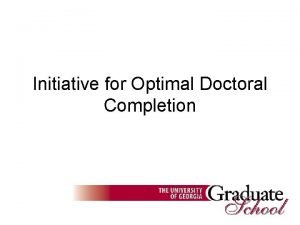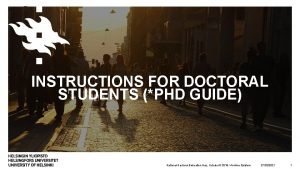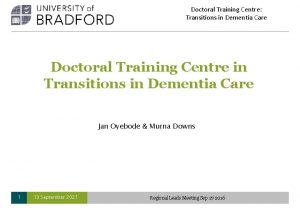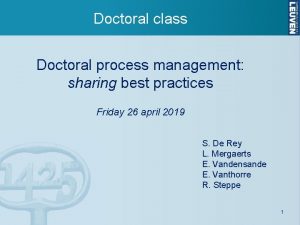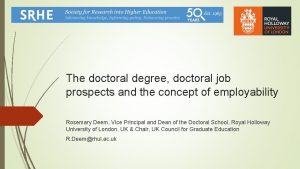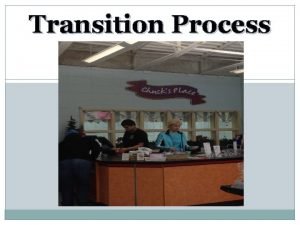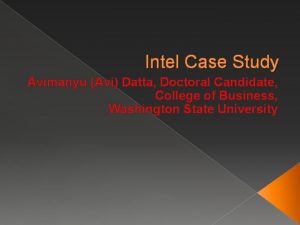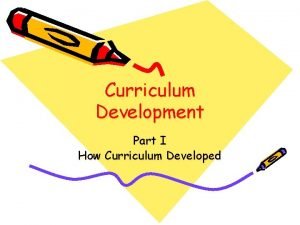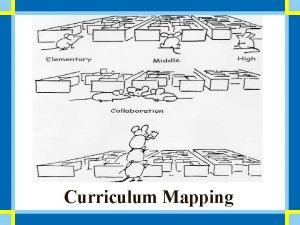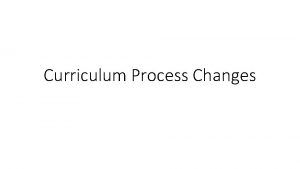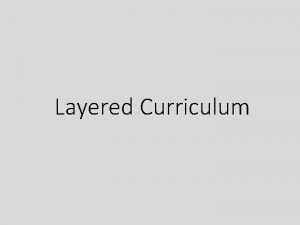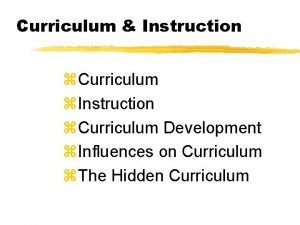A Doctoral Curriculum in Transition A Case Study






























- Slides: 30

A Doctoral Curriculum in Transition A Case Study of Boston University’s Graduate Medical Sciences Curriculum Reform Shoumita Dasgupta, Ph. D.

The initial context

Prospective students Anatomy Biophysics Oral Biology Pharmacology and Biochemistry Microbiology Pathology Physiology Neurobiology

Prospective students Anatomy Biophysics Oral Biology Pharmacology and Biochemistry Microbiology Pathology Physiology Neurobiology Behavioral Neuroscience Biomedical Neuroscience Cell and Molecular Biology Genetics and Genomics Immunology Training Program Medical Nutrition Sciences Molecular Medicine

Curricular overlap: Biochemistry Anatomy and Neurobiology Biophysics Biochemistry Behavioral Neuroscience Biomedical Neuroscience Oral Biology Microbiology Cell and Molecular Biology Genetics and Genomics Pharmacology Pathology Immunology Training Program Physiology Medical Nutrition Sciences Molecular Medicine

Curricular overlap: Cell Biology Anatomy and Neurobiology Biophysics Biochemistry Behavioral Neuroscience Biomedical Neuroscience Oral Biology Microbiology Cell and Molecular Biology Genetics and Genomics Pharmacology Pathology Immunology Training Program Physiology Medical Nutrition Sciences Molecular Medicine

Curricular overlap: Molecular Biology Anatomy and Neurobiology Biophysics Biochemistry Behavioral Neuroscience Biomedical Neuroscience Oral Biology Microbiology Cell and Molecular Biology Genetics and Genomics Pharmacology Pathology Immunology Training Program Physiology Medical Nutrition Sciences Molecular Medicine

Curricular overlap: Genetics and Genomics Anatomy and Neurobiology Biophysics Biochemistry Behavioral Neuroscience Biomedical Neuroscience Oral Biology Microbiology Cell and Molecular Biology Genetics and Genomics Pharmacology Pathology Immunology Training Program Physiology Medical Nutrition Sciences Molecular Medicine

Peaceful coexistence

Historical clutter No room perceived in old curricula for new courses

Convergent evolution Old courses added similar new topics.

Adopting a new paradigm

Leading Change 1. Create urgency. • Document students choosing other graduate schools based on presence of integrated curriculum. • Identify areas of curricular redundancy. Kotter, Harvard Business School, Our Iceberg is Melting

Leading Change 1. Create urgency. 2. Form a powerful coalition. Kotter, Harvard Business School, Our Iceberg is Melting

Stakeholders from programs affected by curricular overlap Anatomy and Neurobiology Biophysics Biochemistry Behavioral Neuroscience Biomedical Neuroscience Oral Biology Microbiology Cell and Molecular Biology Genetics and Genomics Pharmacology Pathology Immunology Training Program Physiology Medical Nutrition Sciences Molecular Medicine

Leading Change 1. 2. 3. • Create urgency. Form a powerful coalition. Create a vision for change. Charge Integrated Curriculum Committee to determine core values for curricular reform. Kotter, Harvard Business School, Our Iceberg is Melting

Leading Change 1. 2. 3. 4. • Create urgency. Form a powerful coalition. Create a vision for change. Communicate the vision. Reach out to key stakeholders (e. g. Departmental chairs & Program directors) individually. • Create opportunities to share the curriculum vision publically through retreats, faculty meetings, and web sites. Kotter, Harvard Business School, Our Iceberg is Melting

Leading Change 1. 2. 3. 4. 5. • Create urgency. Form a powerful coalition. Create a vision for change. Communicate the vision. Remove obstacles. Open dialog to help stakeholders embrace change. Kotter, Harvard Business School, Our Iceberg is Melting

Leading Change 1. 2. 3. 4. 5. 6. • Create urgency. Form a powerful coalition. Create a vision for change. Communicate the vision. Remove obstacles. Create short term wins. Recognition for incremental achievements such as creation of curriculum outline, identification of module directors, completion of first year, etc. Kotter, Harvard Business School, Our Iceberg is Melting

Leading Change 1. 2. 3. 4. 5. 6. 7. • Create urgency. Form a powerful coalition. Create a vision for change. Communicate the vision. Remove obstacles. Create short term wins. Build on the change. Empower module directors to begin detailed course design. Kotter, Harvard Business School, Our Iceberg is Melting

Leading Change 1. 2. 3. 4. 5. 6. 7. 8. Create urgency. Form a powerful coalition. Create a vision for change. Communicate the vision. Remove obstacles. Create short term wins. Build on the change. Anchor the changes in institutional culture. • Move to formally approve courses. • Create curriculum oversight body in Fi. BS Steering Committee • Implement standard student and peer course eval processes. Kotter, Harvard Business School, Our Iceberg is Melting

Foundations in Biomedical Sciences: Why should we move to an integrated curriculum? • • • Encourage students to think in a rigorous and interdisciplinary fashion Coordinate content across courses and programs Reduce redundancy in course content Decrease lecture hours Promote collegiality among participating doctoral students Compete with peer institutions to recruit prospective students

Foundations in Biomedical Sciences: Key features of the integrated curriculum • • A critical thinking component is integrated into each module. (e. g. paper discussions, problem-solving sessions, bioinformatics workshops, etc) Critical thinking activities are carried out in small (6 -8 members + 1 facilitator) break-out groups Each module has a separate course number, exam(s), and grade. Each module has a course director who sits on a curriculum steering committee with the other module course directors.

Foundations in Biomedical Sciences: A Core Curriculum for GMS Doctoral Students Optional electives: Module I: Protein Structure, Catalysis, and Interactions Module II: Structure and Function of the Genome Module III: Architecture and Dynamics of the Cell Module IV: Mechanisms of Cell Communication • Translational Genetics and Genomics • Molecular Metabolism • Physiology of Specialized Cells 2 credits 2 -4 credits Program-specific course(s): 4 -6 credits Program-specific course(s): 4 -8 credits Fall Semester Spring Semester

Foundations in Biomedical Sciences: Key features of the integrated curriculum • • • Students are able to take program-specific courses beginning with their first semester of study. A grant writing course is being piloted for the second year of doctoral study. Formalized, anonymous course evaluations are standard practice for all modules This structure provides more opportunities for students to teach Individual programs can choose to opt into this curriculum

Foundations in Biomedical Sciences: Feedback from the first implementation • “Overall I really enjoyed the course. It caused us to work really hard and forced us to apply the information presented to us to different problems that we were given. It was challenging, yes, but I feel as though I have learned a lot from it and I hope this class continues for years to come. ” • “Comparing this module to last year's course, I think this is a huge improvement. It was very well-organized, the lectures flowed together very smoothly, and the lecturers themselves were excellent at teaching their subjects…Thank you to all of the professors and the course directors for an excellent job. ”

Foundations in Biomedical Sciences: Feedback from the first implementation • “I thoroughly enjoyed both the pace and format of this module, especially using last year’s curriculum as a reference point. ” • “I'd like to stress that I enjoyed each module, I thought each was well run and was successful in giving first year students a vital knowledge base that truly is interdisciplinary. ” • “I'd like to thank every faculty member and TA associated with this course. It has made me think in a different way when approaching my work at the bench, and is making me a more complete researcher. ”

The new context

Program in. Prospective Biomedicalstudents Sciences Students Labs Anatomy Biophysics Oral Biology Pharmacology and Biochemistry Microbiology Pathology Physiology Neurobiology Behavioral Neuroscience Biomedical Neuroscience Cell and Molecular Biology Genetics and Genomics Immunology Training Program Medical Nutrition Sciences Molecular Medicine

Acknowledgements Boston University, Division of Graduate Medical Sciences Linda Hyman, Associate Provost Karen Symes, Foundations Co-director GMS students GMS Graduate Program Directors, Chairs, and Representatives
 Best worst and average case
Best worst and average case It project failure case study
It project failure case study Eui doctoral programme
Eui doctoral programme Abd dissertation
Abd dissertation Nsf doctoral dissertation improvement grant
Nsf doctoral dissertation improvement grant Umbc doctoral programs
Umbc doctoral programs Doctoral initiative on minority attrition and completion
Doctoral initiative on minority attrition and completion College doctoral ubfc
College doctoral ubfc Power point tesis doctoral medicina
Power point tesis doctoral medicina South west and wales doctoral training partnership
South west and wales doctoral training partnership Nsf dissertation improvement grant
Nsf dissertation improvement grant Csu doctoral incentive program
Csu doctoral incentive program Eladeb carte
Eladeb carte Biological science inquiry model joseph schwab
Biological science inquiry model joseph schwab Short case vs long case
Short case vs long case Average case time complexity of binary search
Average case time complexity of binary search Glennan building cwru
Glennan building cwru Bubble sort algorithm pseudocode
Bubble sort algorithm pseudocode Bubble sort best case and worst case
Bubble sort best case and worst case Bubble sort best case and worst case
Bubble sort best case and worst case Ambiguous case example
Ambiguous case example Information system of zara
Information system of zara Yelp case study
Yelp case study The kf case study
The kf case study Beth anders
Beth anders Action research vs case study
Action research vs case study Volkswagen of america managing it priorities
Volkswagen of america managing it priorities Plant machinery valuation
Plant machinery valuation Phil stephens villanova
Phil stephens villanova Starbucks foreign direct investment case study
Starbucks foreign direct investment case study Case study questions for students
Case study questions for students


